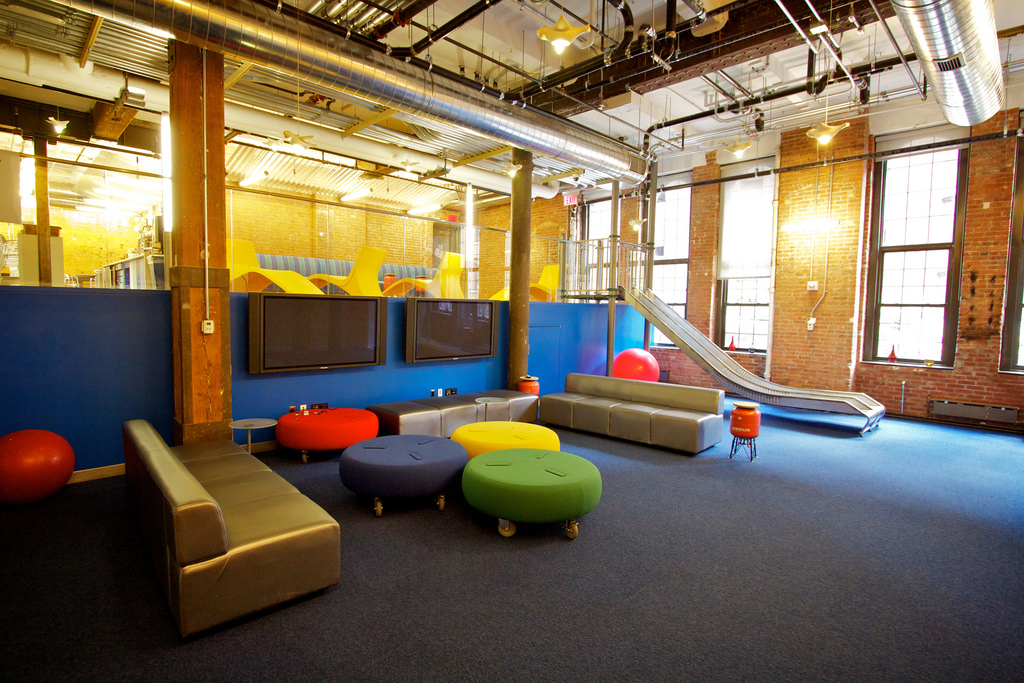

by Marcin Wichary via Flickr CC
Tech companies have developed something of a reputation in recent years for being inherently cool places to work. Many established and emerging tech firms successfully project an image of themselves as nurturing, individual-focussed and typically quite creative environments, underpinned by a relatively youthful outlook that blends a healthy dose of levity in with the hard graft. But how accurate is this picture in practice?
A reputation for building distinctly atypical office environments certainly contributes to the imaginative, casual and slightly unorthodox ethos we’ve come to associate with employers like Google, Facebook, and Apple. The idea that these sorts of offices are commonly filled with giant indoor slides and adult soft play areas has become much more an overblown caricature than a true reflection of most corporate tech environments, of course; in reality, very few are quite so self-consciously wacky as all that.
However, it’s fair to say that many do eschew the traditional cubicle-based office layout common to various other industries, opting instead for more open-plan, communal spaces that frequently include gadget-filled breakout zones and plenty of scope for personalization. But providing a reasonably colorful and creative workplace is just one of the ways in which some tech employers aim to attract and retain talent in a competitive, high staff turnover market.
Whether or not they’re succeeding in doing so was one of the key questions asked by online salary, benefits and compensation company PayScale in a recent employee survey, and the results made for interesting reading.
The study sampled a range of different employee demographics across 17 of the leading tech corporations, including responses from staff at such companies as Microsoft, Apple, IBM, Google, Amazon, Facebook, Tesla and more. PayScale’s research charted respondents’ perceptions of overall job satisfaction against a range of variables including median staff age, number of years at the company, total years of industry experience, and average early/mid-career pay levels. The results, compiled into a series of compiled into a series of infographics, reveal some striking trends.
Firstly, it will likely come as no surprise that – just like in most other industries – job satisfaction tended to correlate pretty directly with median pay rates. The companies whose staff reported lower levels of job satisfaction were almost always placed lower down the average salary scale than rivals whose staff appeared more satisfied overall. While this is precisely what you’d expect to see across most corporate landscapes, it’s worth noting that trendier offices clearly aren’t the most powerful tool when it comes to maintaining a content and loyal workforce.
In fact, the charts also indicate a fairly stark inverse correlation between median employee age and job satisfaction: on the whole, the higher a tech company’s average staff was, the less likely individuals were to report back as being strongly satisfied. Notably, only three businesses in the study had a median staff age of over 35 – namely IBM, Hewlett Packard and Oracle – and these same three brands’ workers were the ones who claimed to find their jobs among the least rewarding. (They’re also the employers with the longest-serving and most experienced workforces. While there are various conclusions one could draw from this, it seems highly unlikely to be coincidental.)
One theory it’s tempting to infer from the data is that the industry’s renowned youth-orientated outlook might eventually prove problematic for some of the longest-serving and most experienced staff. It appears that better average rates of pay might stave off any sense of itchy feet to a degree, but the charts also seem to show that for tech staff at most levels, there’s perhaps something of an industry ceiling. While it may be possible to climb the ladder faster at a younger age in tech than in many other sectors, the obvious inference is that it becomes increasingly difficult to continue that progression in later years.
Of course, this is very much conjecture based on a few apparent trends in what remains a relatively young industry populated by hundreds of new startup companies. For all but the most established brands, there’s also a lack of sufficient long-term data to draw more solid conclusions. And yes, it’s also true that tech company employees as a whole do tend to be reasonably young, reasonably well compensated and reasonably happy in their current positions. That’s presumably why so many of the industry’s familiar names can be found scoring high placements in all manner of global ‘top employer’ longlists, after all.
But, looking ahead, it will certainly be interesting to see how these workforces shift and develop as individuals’ careers (and ages) progress – and moreover, if many of those individual staff members go on to achieve tenures with any single tech company that compare favourably against average loyalty and retention rates in other industries.
